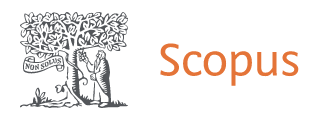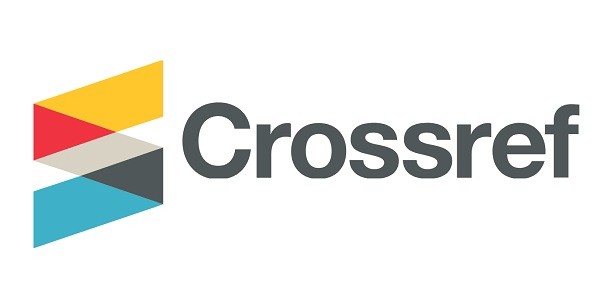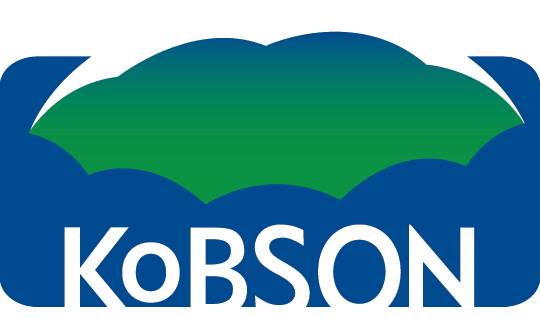DOI: 10.5937/jaes0-29770
This is an open access article distributed under the CC BY 4.0

Volume 19 article 846 pages: 712-730
The research's main objective is to study water quality management techniques using different scenarios by applying three mathematical models. The study focuses on the Rosetta Branch-River Nile, which is considered the supreme contaminated Branch of river Nile. The study is composed of three main parts. First: Water quality modeling using WASP 6 was adopted to simulate the water quality status. This model was calibrated and used to simulate different scenarios presenting an alternative solution for the water quality problem in Rosetta Branch. They also optimized water quality indicators using the genetic algorithm to determine the optimum techniques essential to eliminating the Rosetta branch's water quality problem. Second: Mathematical Modeling Using the SOBEK model, measure the environmental effect of wastewater discharges on the water quality of the Rosetta branch, taking into account seasonal variations. Third: statistical analyses to research the association between discharge and concentration of ammonia using simple regression equations. The study is focused on theoretical and applied scientific Methodology. It concluded that increased discharge in the Branch does not significantly affect water quality in the Branch. However, the treatment processes appear to have a large and significant impact on the water quality instead of increasing discharge solution. There is an inverse relationship between the discharge in Rosetta Branch and ammonia concentrations. All relationships have a correlation coefficient of, on average of about 0.7. The paramount water quality challenging in the Branch is cumulative of ammonia and Biological Oxygen Demand (BOD) overhead guidelines. However, improving water quality for point source effluents, particularly at El Rahawy drain, improves the Rosetta branch's water quality.
The corresponding author expresses her appreciation to
Prof. Tarik Tawfic, former director of the Central Environmental Quality Monitoring Laboratory, Ministry of Water
Resources and Irrigation, Cairo, who moderated this paper and significantly strengthened the manuscript. She is
also extremely appreciative of professors at the National
Water Research Center in Cairo to clarify the manuscript's
earlier edition. However, all mistakes are her own and do
not tarnish the credibility of these respected experts. The
corresponding author submits that there is no conflict of
interest. This study did not obtain any significant grants
from public, private, or non-profit funding organizations.
1. Nile Basin Initiative NBI (2005) Nile Basin National Water Quality Monitoring Baseline Study Report for Egypt, The Nile Transboundary Environmental Action Project (NTEAP). pp127 http://nile.riverawarenesskit.org/English/NRAK/Resources/Document_centre/WQ_Baseline_report_Egypt.pdf
2. Leib, B., Jabro, J.,&Matthews, G.(2003). Field Evaluation and Performance Comparison of Soil Moisture Sensors. Soil Science 168(6):396-408. DOI: 10.1097/01.ss.0000075285.87447.86
3. Abou El Ftouh S. (2013). Surface Water Quality Management Case Study: Rosetta Branch-River Nile. Ph.D. Thesis, Faculty of Engineering Irrigation &hydraulic Department Ain Shams University, Cairo Egypt. Pp230 http://main.eulc.edu.eg/eulc_v5/Libraries/Thesis/BrowseThesisPages.aspx?fn=PublicDrawThesis&BibID=11765884
4. El Gohary, R. (2017). Effect of Increasing Discharge on Water Quality -A Case Study Asian Journal of Natural & Applied Sciences Vol. 6(2) June 2017. ISSN: 2186-8476, ISSN: 2186-8468 Print. www.ajsc. leena-luna.co.jp. pp 51-62
5. Abdel-Satar, A , Ali H.,& Goher,M . (2017) Indices of water quality and metal pollution of Nile River, Egypt. Egyptian Journal of Aquatic Research (2017) 43, 21–29. http://creativecommons.org/licenses/by-nc-nd/4.0/
6. Radwan, M.( 2009). Global Warming Impacts on Water Quality in the Nile Delta, Egypt, Nile Basin Water Engineering Scientific Magazine, Vol.2. p71-78.
7. Ebaid,H ,& Abou El Ella,S.(2017). Mapping of Aquaculture in River Nile Using Google Earth Images and GIS Procedures - Rosetta Branch, Egypt. J Am Sci 2017;13(6):57-63]. ISSN 1545-1003 (print); ISSN 2375-7264 (online). http://www.jofamericanscience.org doi:10.7537/marsjas130617.07.
8. Mostafa, M.K., Elshafei, M.M. and Peters, R.W. (2015) Improve Water Quality at the El-Rahawy Drain and the Rosetta Branch, Egypt. Journal of Environmental Protection, 6, 1139-1148. http://dx.doi.org/10.4236/jep.2015.610101
9. El Gammal, H., & El Shazely, H.(2008). Water Quality Management Scenarios in Rosetta Branch River Nile, Egypt. Twelfth International Water Technology Conference, IWTC12 2008, Alexandria, Egypt.901-912
10. Ibrahim, A. M., Kamel, S. A., OMAR, A. S. ,& Madkour, H. A.(2017). Assessment of Pollution Sources on Rosetta Branch, Egypt. Nat Sci 2017;15(6):126-144. ISSN 1545-0740 (print); ISSN 2375-7167 (online). http://www.sciencepub.net/nature 14. doi:10.7537/marsnsj150617.14.
11. Mohamed, M., Elansary, A.,& Moussa, M.(2017). A Modelling Approach to Manage Water Quality at Gharbia Main Drain, Egypt. Twentieth International Water Technology Conference, IWTC20, Hurghada, Egypt. pp 133-145.
12. Abdo, M.H.(2013). Physico-Chemical Studies on the Pollutants Effect in the Aquatic Environment of Rosetta Branch, River Nile, Egypt. Life Sci J 2013;10(4):493-501] (ISSN: 1097-8135). http://www.lifesciencesite.com
13. Elsayed, E.(2014). Using QUAL2K Model and river pollution index for water quality management in Mahmoudia Canal, Egypt. Journal of Natural Resources and Development 2014; 04: 54 - 2. DOI: 10.5027/jnrd.v4i0.08
14. Mostafa, M.,& Peters, R. (2016). A Comprehensive Assessment of Water Quality at the Rosetta Branch of the Nile River, Egypt. Journal of Civil Engineering and Architecture 10 (2016) 513-529 DOI: 10.17265/1934-7359/2016.05.001
15. Lifen,H., Cheng Lianbiao,C.,& Bi Xingwen,B. (2012). Apply with WASP Water Quality Model. The 2nd International Conference on Computer Application and System Modeling, Published by Atlantis Press, Paris, France. pp714-717.
16. Azab, A.(2012). Integrating GIS, Remote Sensing, and Mathematical Modelling for Surface Water Quality Management in Irrigated Watersheds. Doctorates of the Delft University of Technology and the Academic Board of the UNESCO-IHE Institute for Water Education for DOCTOR, Delft, the Netherlands. CRC Press/Balkema www.crcpress.com - www.taylorandfrancis.co.uk - www.ba.balkema.nl ISBN 978-0-415-62115-1
17. El Gohary, R. (2015). Agriculture, Industry, and Wastewater in the Nile Delta. International Journal of Scientific Research in Agricultural Sciences, 2(Proceedings), pp. 159-172, 2015. http://www.ijsrpub.com/ijsras p159-170 ISSN: 2345-6795
18. Dimian,M., Donia,N., Wadi,A.,& Ibrahim,F. (2014). Impact of El- Rahawy Drain on the water quality of Rosetta Branch of the River Nile, Egypt. International Journal of Environmental Science and Engineering(IJESE) Vol. 5: 15- 23 (2014) http://www.elac.pvamu.edu/pages/5779.asp
19. Wool T. A.,Ambrose R. B., James L. M., & Comer E. A. (2014). Water Quality Analysis Simulation Program (WASP) -Version 6.0" User's Manual, USEPA. pp 260 https://www.researchgate.net/publication/26991027
20. Larco ,A.,& Medina ,S.(2019).Application of WASP model for assessing water quality for eutrophication control for a reservoir in the Peruvian Andes. Lakes & Reserved. 2019;24:37–47. DOI: 10.1111/lre.12256. wileyonlinelibrary.com/journal/lre
21. Central Laboratories for Environmental Quality monitoring CLEQM (2008). Analytical results of Rosetta branch water quality. (Unpublished report), El-Kanater Egypt.
22. Ambrose, R., Jr., P.E . (2017). WASP8 Stream Transport - Model Theory and User's Guide / Supplement to Water Quality Analysis Simulation Program (WASP) User Documentation. U.S. Environmental Protection Agency pp72.
23. Deltares (2018). SOBEK- Hydrodynamics, Rainfall-Runoff, and Real-Time Control - User Manual. Deltares, Boussinesqweg, Delft, The Netherlands https://www.deltares.nl/software
24. Prinsen, G.F.,& Becker, B. (2011).Application of SOBEK Hydraulic Surface Water Models in the Netherlands Hydrological Modelling Instrument. Irrig. And Drain. 60 (Suppl. 1): 35–41.wileyonlinelibrary.com. DOI: 10.1002/ird.665.Deltares, Delft, the Netherlands
25. Drainage Research Institute DRI, WL/DELFT Hydraulics, (2000). Monitoring and Analysis of Drainage Water Quality, "Final Report MADWQ Project." Technical Report No. 60.
26. Drainage Research Institute DRI, (2000), Monitoring and Analysis of Drainage Water Quality Project, "Drainage Water Status in the Nile Delta Yearbook 97/98". Technical Report No. 52.
27. Tawfic, T., & Yehia, M. (2006).The negative change in water quality of the Rosetta Branch during the winter closure period, Cairo University, Chemical Engineering Bulletin, 2006.
28. Coley, D.(1999). An Introduction to Genetic Algorithms for Scientists and Engineers. British Library Cataloguing-in-Publication Data, World Scientific Publishing Co. Pte. Ltd. ISBN 981-02-3602-6
29. David A Coley. (1999).An introduction to genetic algorithms for scientists and engineers. http://ftp.demec.ufpr.br/CFD/bibliografia/an_introduction_to_genetic_algorithms_for_scientists_and_engineers_coley.pdf







